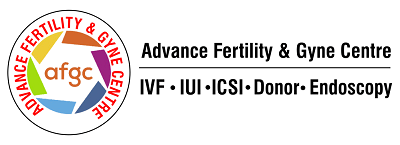In today’s world, where individuals may delay parenthood for medical, personal, or professional reasons, fertility preservation has become an increasingly important option. It offers hope and flexibility to those facing medical treatments or life circumstances that may affect their future ability to have biological children. This article explores what fertility preservation is, who should consider it, and how to make informed choices about it.
What Is Fertility Preservation?
Fertility preservation refers to medical techniques that help individuals safeguard their ability to conceive biological children in the future. These methods involve the collection and storage of reproductive cells (eggs, sperm, embryos) or reproductive tissue.
For women, this commonly includes egg freezing (oocyte cryopreservation), embryo freezing (if fertilized with sperm), or ovarian tissue freezing. For men, it involves sperm banking or, in specific cases, testicular tissue freezing. Fertility preservation is most effective when done before fertility is compromised, whether due to age or medical treatments like chemotherapy.
Who Should Consider Fertility Preservation?
While fertility preservation is often associated with cancer patients, it is increasingly relevant for a broader group. Individuals or couples in the following categories may consider preserving their fertility:
- Women who wish to delay childbearing for personal, educational, or career reasons but are concerned about age-related fertility decline.
- Those undergoing medical treatments that can damage reproductive organs (e.g., chemotherapy, radiation, or surgery).
- Individuals with genetic conditions or autoimmune diseases (like lupus) that may impair fertility.
- Transgender individuals planning to undergo hormone therapy or gender-affirming surgery that could impact reproductive function.
- Couples undergoing IVF, who may choose to freeze surplus embryos for future use.
Proactively preserving fertility gives individuals more control and options when they are ready to start a family.
Fertility Preservation for Cancer Patients
Cancer treatment is one of the most common medical reasons people seek fertility preservation. Chemotherapy and radiation, especially when directed at the pelvis or abdomen, can severely impact reproductive organs and hormonal function. Surgical removal of reproductive organs can also result in irreversible infertility.
For women, options include:
- Egg or embryo freezing before treatment begins. This requires time for ovarian stimulation and egg retrieval—usually around two weeks.
- Ovarian tissue cryopreservation, which involves removing and freezing ovarian tissue for reimplantation later. It can be done quickly and does not require hormonal stimulation.
For men, sperm freezing before chemotherapy is the standard approach. Even a single sample can be sufficient for future assisted reproduction.
Timing is critical. Ideally, fertility preservation should be discussed immediately upon cancer diagnosis to avoid delays in treatment and maximize reproductive potential.
How to Choose the Right Fertility Preservation Method
Choosing the appropriate fertility preservation method depends on several individual factors, including age, medical history, reproductive goals, and how soon treatment must begin.
For women, key options include:
- Egg freezing: Ideal for women who are not currently partnered but want the option of using their own eggs later.
- Embryo freezing: Suitable for those with a partner or who wish to use donor sperm and are open to embryo creation now.
- Ovarian tissue freezing: Useful in prepubertal girls or when treatment must begin urgently.
For men:
- Sperm freezing: Simple, non-invasive, and highly effective.
- Testicular tissue freezing: An emerging option for prepubertal boys, still under clinical research.
Consulting with a reproductive endocrinologist or fertility specialist can help tailor the approach to individual needs.
Age and Fertility Preservation: What to Know
Age is one of the most important determinants of fertility and the success of preservation techniques. For women, fertility begins to decline in the early 30s, with a sharper drop after 35. Egg quality and quantity decrease with age, which directly impacts success rates.
The younger a woman is when she freezes her eggs or embryos, the higher the chances of a successful outcome later. For instance, egg freezing in the late 20s to early 30s offers significantly better results than after 38.
Men also experience a gradual decline in fertility with age, though the decline is less dramatic. Advanced paternal age is associated with increased risks of genetic mutations and complications.
Ultimately, preserving fertility earlier, before decline begins, is more effective and provides a wider window for family planning in the future.
What are the Risks and Benefits
Like any medical procedure, fertility preservation comes with both risks and benefits.
Benefits:
- Future reproductive autonomy.
- Preservation of biological parenthood.
- Psychological reassurance.
Risks and Limitations:
- No guaranteed success.
- Cost and access barriers.
- Medical risks such as ovarian hyperstimulation.
- Emotional burden during the process.
While preservation expands future options, it is not an insurance policy. Honest discussions with fertility experts help manage expectations.
Key Takeaways
- Fertility preservation includes egg, sperm, and embryo freezing, and tissue cryopreservation.
- Recommended for those facing medical treatments, age-related fertility decline, or personal life plans.
- Cancer patients should discuss options early.
- Method selection should be personalized.
- Age plays a critical role in success.
- Preservation offers hope but is not guaranteed.
- Proper counseling and planning are essential.

